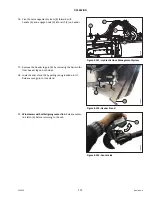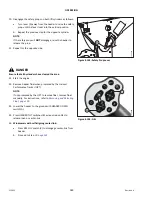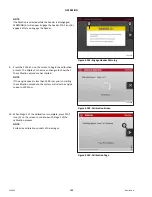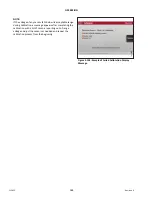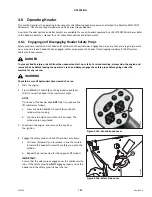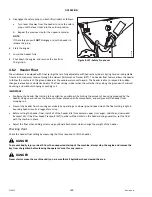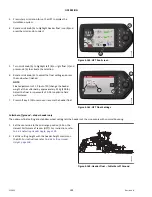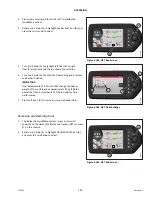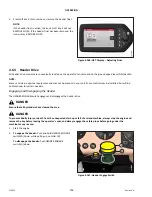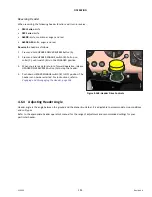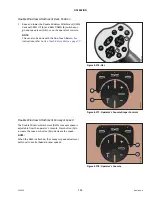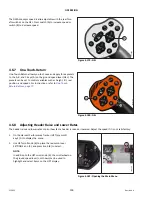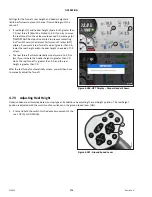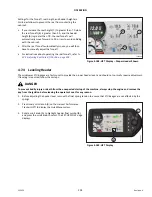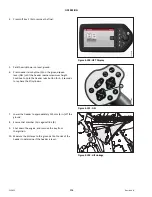
215922
191
Revision A
1015816
A
A
B
Figure 4.158: GSL
1.
Start the engine.
2.
Use HEADER TILT switches (A) on the ground speed
lever (GSL) to set the center-link to the mid-range position
(
5.0
on the Harvest Performance Tracker [HPT]).
3.
If checking float with a draper header attached, set the reel
to the normal operating position.
4.
Using HEADER DOWN switch (B), lower the header fully.
The header lift cylinders will fully retract.
5.
Ensure the header is level with the ground with zero tilt.
6.
Shut down the engine, and remove the key from the ignition.
7.
Grasp one end of the header and lift. The force required to lift the header should be the same at both ends (refer to
Table
Table 4.4 Target Header Float Values
Header Type
Force Required to Lift Header at the Ends with Lift Cylinder Fully Retracted
Draper
335
–
380 N (75
–
85 lbf) with stabilizer/transport wheels raised (if equipped)
8.
Restart the engine, and adjust float as required. For instructions, refer to
.
NOTE:
Increasing the float value on the HPT makes the header feel lighter.
Setting Float
The float can be set for windrowing with the cutterbar on the ground or with the cutterbar off the ground (normally used
with the draper header).
Cutterbar on ground
The optimum float setting lets the header follow the contour of the terrain.
1015842
Figure 4.159: Header Float
–
Cutterbar on Ground
1.
Set the center-link to the mid-range position (5.0 on the
Harvest Performance Tracker [HPT]). For instructions, refer
to
4.6.4 Adjusting Header Angle, page 195
2.
Lower the header until the cutterbar is on the ground.
NOTE:
To minimize scooping rocks when operating at the flattest
header angle, lower the header skid shoes. For instructions,
refer to the header operator
’
s manual.



